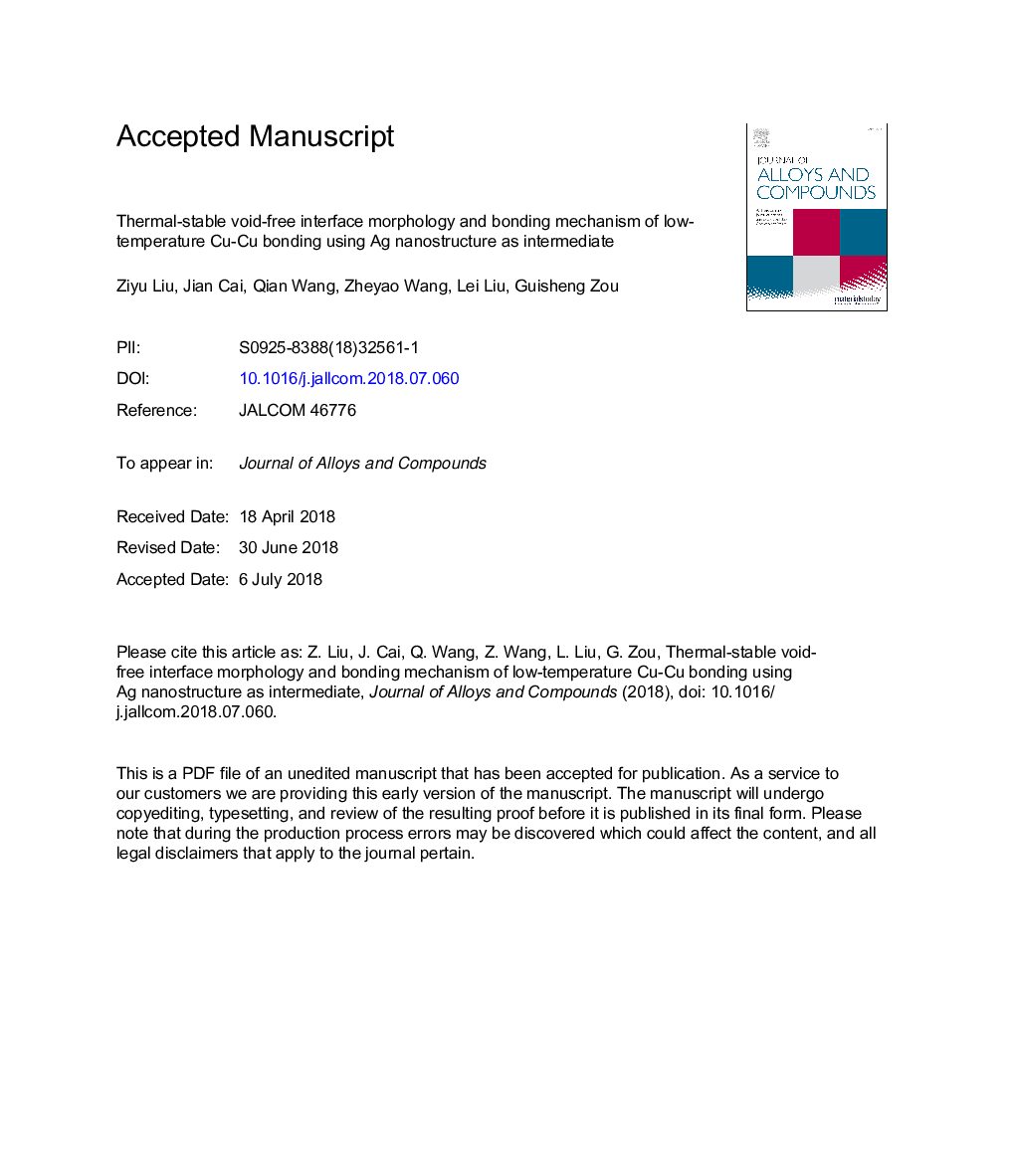| Article ID | Journal | Published Year | Pages | File Type |
|---|---|---|---|---|
| 7990327 | Journal of Alloys and Compounds | 2018 | 15 Pages |
Abstract
To lower the bonding temperature and save the time of the Cu-Cu bonding applied for 3D integration, Ag nanostructure was deposited on the Cu pads as intermediate by femtosecond pulsed laser deposition (PLD). The interface morphology after bonding including oxidation detection and microstructure evolution during high-temperature storage was investigated. The underlying bonding mechanisms were then analyzed and concluded. The element distribution of Ag nanostructures after PLD deposition is detected using the scanning transmission electron microscope equipped with energy dispersive X-ray spectroscopy mapping, and no oxygen is found inside the nanostructures. The electron energy loss spectroscopy shows that no oxidation happens across the Cu-Ag-Cu bonding interfaces during the bonding process by observing the same chemical state of Ag and Cu as the pure metal atom. The as-bonded Cu-Ag-Cu samples were stored at the temperature of 200â¯Â°C for 500â¯h and the microstructure at the bonding interface was observed. Based on the interface microstructure and crystal structure, the physical mechanisms of Cu-Cu bonding using Ag nanostructure as intermediate was explored and summarized in detail. The mechanical interlock between Ag nanostructures, large plastic deformation, surface melting and bulk diffusion are found to simultaneously contribute to the bonding.
Related Topics
Physical Sciences and Engineering
Materials Science
Metals and Alloys
Authors
Ziyu Liu, Jian Cai, Qian Wang, Zheyao Wang, Lei Liu, Guisheng Zou,
